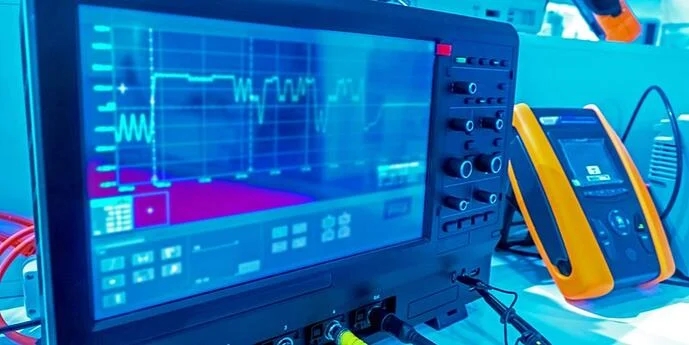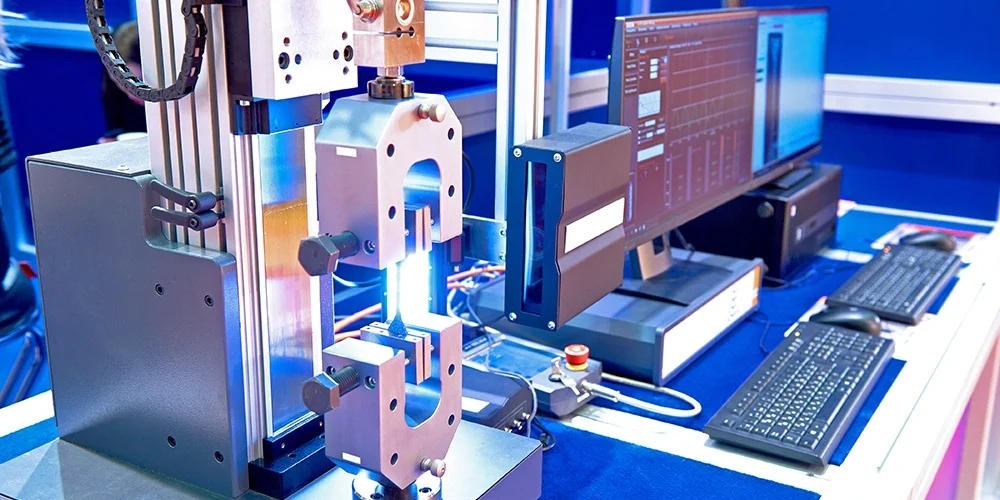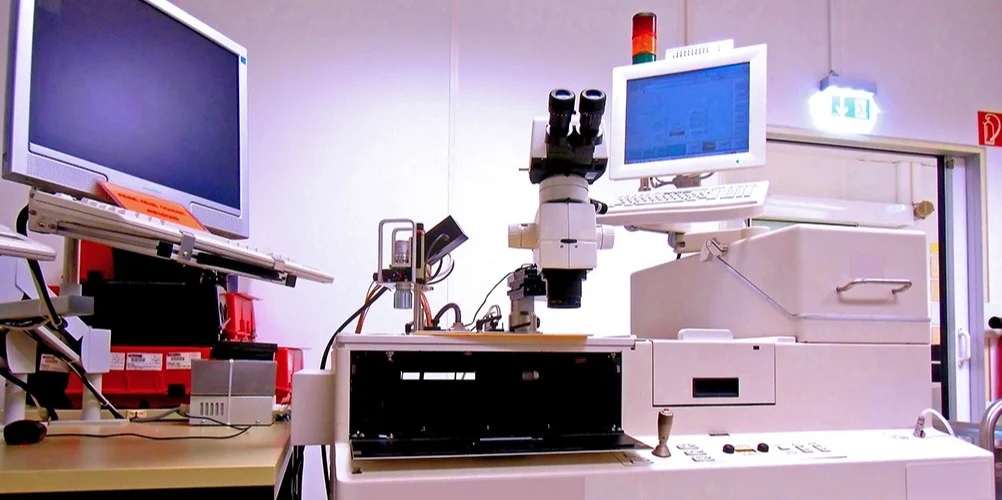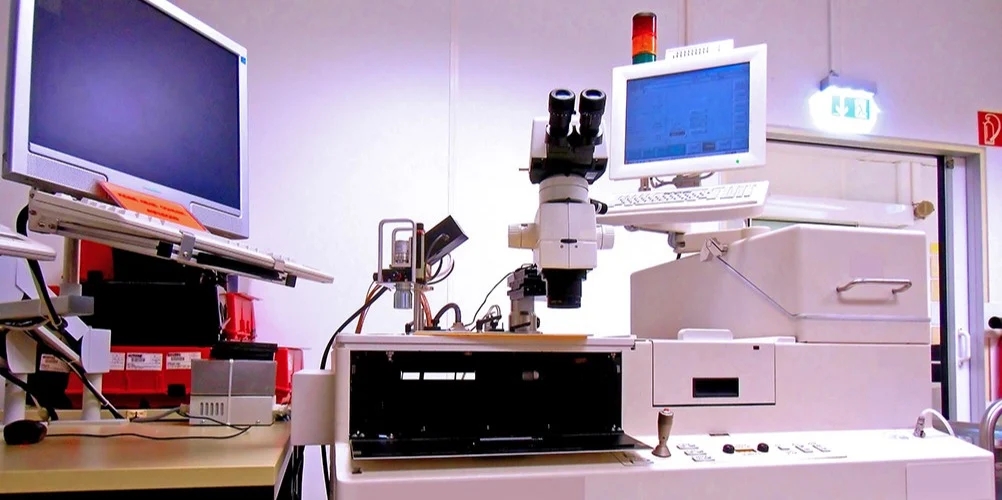As of 2019, the global automatic test equipment (ATE) market is worth $6 billion. As more and more equipment becomes equipped with electronics whose performance and functionality to be tested and validated prior to deployment or sale, we expect to see this number increase.

ATE is a useful data acquisition and diagnostic tool for testing a variety of electronics in various industries, including defense and aerospace, automotive, industrial automation, among others.
ATE is directly responsible for ensuring that end users of electronic equipment not only acquire devices that perform and function as intended, but are also not exposed to danger as a result.
Without further ado, let’s jump right in.

Automatic test equipment (ATE), or automatic testing equipment, is computerized machinery that uses test instruments to carry out and evaluate the results of functionality, performance, quality, and stress tests performed on electronic devices and systems. As its name implies, ATE automates traditionally manual electronic test equipment and processes, and requires minimal human interaction.
Automatic test equipment is also known as automated test equipment or automated testing equipment. They both use the same ATE acronym. They are just different terms that refer to the same equipment.
The device whose attributes are assessed by the ATE is usually referred to as the device under test (DUT), unit under test (UUT), or equipment under test (EUT).
Many electronic devices in use today are tested by ATE to ensure adequate performance, functionality, and the safety of those who will use, or directly and indirectly benefit from the use of, such devices.
Devices tested by ATE include integrated circuits (ICs), printed circuit boards (PCBs), hard disk drives (HDDs), systems and modules in automobiles, and the various electronic systems and line-replaceable units (LRUs) that support aircraft, spacecraft, and satellites, a family of technologies known as avionics.

What are the components of an ATE system?
A typical automated test solution consists of five main components: hardware, software, test instruments, signal sources, and test probes or handlers.
Hardware, including standard 19-inch rack mount servers and workstations, power supplies, PCIe backplanes and related PXI modules, interface modules, embedded controllers, analog inputs and outputs, digital input/output, and AC/DC outlets.
Software, for test development and management of data collection, storage, reporting, and analysis.
Test instruments, such as a digital storage oscilloscope (DSO), digital multimeter, or inductance, capacitance, and resistance (LCR) meter.
Signal sources, such as an arbitrary waveform generator (AWG), function generator, pulse generator, or radio frequency (RF) generator.
Test probes or handlers, which establish a connection between a test instrument and a DUT, UUT, or EUT.
These components are usually consolidated into all-in-one test stations, which vary greatly in size and portability, from small, compact test stations on wheels, to mammoth, stationary test towers resembling data center server rack cabinets.
Important to note is that not all automated test solutions use the same hardware, software, test instruments, signal sources, and probes or handlers; these configurations vary widely depending on the device being tested by the customer and the parameters requiring measurement.

ATE controls, monitors, captures data using, and derives insights from a wide range of test instruments and signal sources, including:
Digital multimeters, for voltage, current, and resistance measurements.
LCR meters, for inductance, capacitance, and resistance measurements.
Digital storage oscilloscopes (DSOs), for display of signal voltages and analysis of amplitude, distortion, and other characteristics.
Radio frequency (RF) or vector signal generators (VSGs), for RF signal generation.
Arbitrary waveform generators (AWGs), for generation of user-defined electrical waveforms.
A high-performance data acquisition (DAQ) computer, sometimes called the master controller, runs special test software, or DAQ software, such as National Instruments' Automated Test Software Suite, that controls and streamlines the test station's instruments and signal sources. The master controller typically has lots of PCIe slots into which any PCIe-based signal or sensor expansion cards are inserted. These cards allow the DAQ of the DUT, UUT, or EUT to take place.
The raw data captured by the test instruments is monitored, analyzed, and stored using the master controller’s signal sources and test software. These readings are then used to determine whether changes to the device need to be made, whether it's ready to head to an integrator or end customer, or whether it’s ready to hit the shelves.
The overall purpose of ATE systems is to ensure that electronic devices perform and function as intended once they’re in the customer’s hands, which consequently prevents defective or faulty devices from entering the market.
If faults or defects are detected during testing, ATE also helps diagnose why, which allows manufacturers to finetune and make corrections where necessary before their devices are sent to customers.
ATE systems also helps cut down on testing time and saves companies a lot of money by digitizing and automating traditionally manual testing equipment, procedures, and processes.
In fact, there are a host of benefits associated with using ATE, including:
Reduced test and cycle times: the automation factor ensures test and cycle time consistency by eliminating widely variable troubleshooting on behalf of engineers.
Reduction or prevention of data input errors: to err is to be human. ATE gets it right every time, assuming there are no technical issues with the equipment.
More efficient and cost-effective use of available engineering resources: engineers can focus on the occasional testing issue that arises instead of performing the tests manually.
Faster and more accurate tests: manual testing relies on the speed and skills of the test engineer; therefore, results are only as speedy and quality as the test engineer and his or her skillset.
The aerospace and defense industries are big buyers of ATE because of the lifesaving, mission-critical, and safety-critical electronics deployed on military aircraft, ships, ground vehicles, and in weapons, missile launch , radar, and wireless communication systems.
These electronics need to be assessed to a greater extent than electronics in other industries for critical safety and national security purposes. As such, aerospace and defense companies spend a great deal of time and resources on testing and validation prior to deployment.
Pretty much anything from a missile launch system to avionics systems on the latest fighter aircraft is assessed and validated by aerospace and defense companies before fielded by the DoD, reducing the likelihood of a failure to launch or a Mayday situation during a mission.
But aerospace and defense aren't the only industries who make frequent use of ATE. Outside of these two industries, the following industries also use ATE to test their electronics:
Semiconductor fabrication, where ATE is used to measure output signals of semiconductor devices to validate their functionality.
Automotive and transportation, where ATE is used to assess the functionality of various integrated circuits powering today’s vehicles, including those found in advanced driver-assistance systems (ADAS), infotainment systems, braking units, batteries, active alignment systems, and other components.
Consumer electronics, where ATE is used to assess the functionality of smartphones and tablets, radios, televisions, appliances, speakers, headphones, fitness wearables, and more.
Telecommunications, where ATE is used to test set-top boxes, customer premises equipment (CPE), residential gateways, cable-modem termination systems, optical transponders, among other equipment.
Medical technology, where ATE is used to test numerous medical devices, such as temperature monitors, pacemakers, defibrillators, ventilators and telemetry devices, vision inspection systems, and various surgical devices.
Contact: Nina She
Phone: +86-13751010017
E-mail: info@iec-equipment.com
Add: 1F Junfeng Building, Gongle, Xixiang, Baoan District, Shenzhen, Guangdong, China